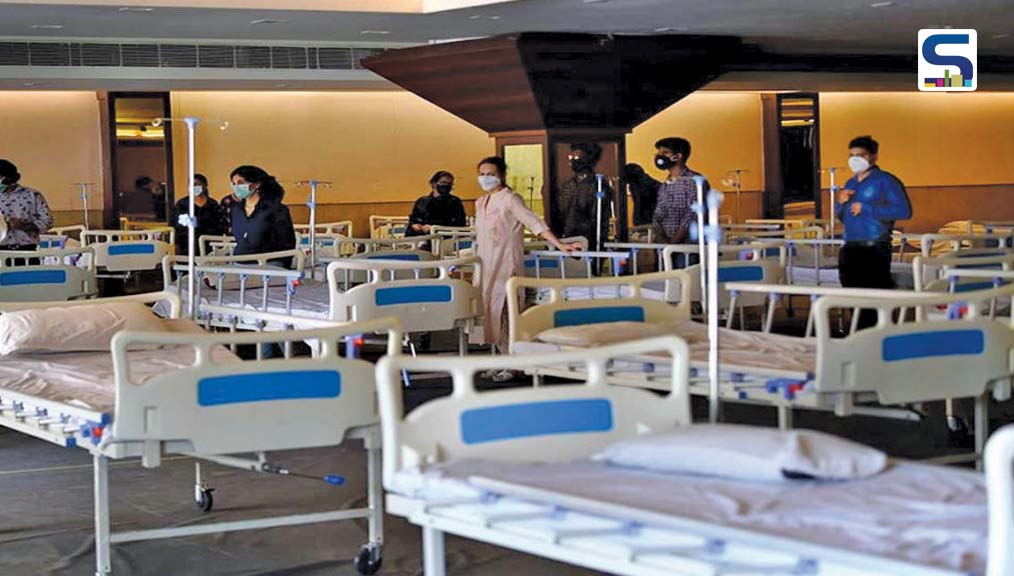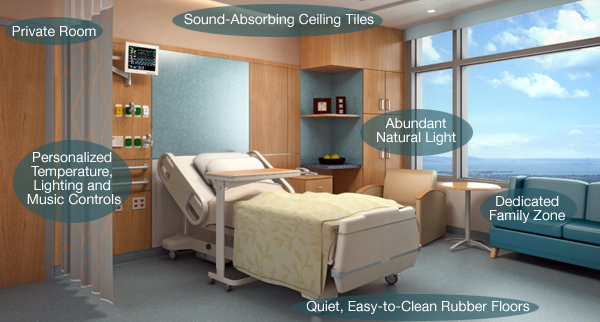
This article is in continuation to our previous article - How to Build Better for Future Epidemics- Transformation in Material and Design. In the last section, SURFACES REPORTER (SR) covered the transformations we will see in the healthcare infrastructure design, in terms of material and products. In this piece, we will look deeply into the current status of Indian healthcare system facilities and infrastructure as compared to developed countries. And whether India's healthcare system is equipped enough to handle an epidemic.
Also Read: When legends meet! BV Doshi India & Alvaro Siza Portugal
Talking about the healthcare facilities and infrastructure in India, Shamit says, “Healthcare infrastructure in India is a mix match. On one hand, we are providing basic healthcare to the poor sections of the society and on the other hand, we have large hospital chains like Medanta, the Fortes, etc. which are JSI compliant. However, in terms of facilities, we are lacking hospital beds, we have around one bed per thousand population. We aim to reach 2 beds per 1000 population by 2050 whereas WHO talks about 3 beds per 1000 population. So, definitely, we are lacking in that aspect but we do have all kinds of facilities available and the thing is being improved by the government in terms of setting up a lot of new hospitals, new AIIMS projects are also coming up.”
 Image Courtesy: Outlook India
Image Courtesy: Outlook India
“Government is really pushing things over in terms of having more medical colleges here and there. It’s a very established fact and all the district headquarters hospitals have been turned into medical colleges and this will enhance our human resource of healthcare infrastructure which is highly deficient today,” says Ashok Kumar.
“Today in India, we are designing healthcare facilities that level to any global hospitals. The problem is not the design or the execution but the financial modelling of who it supports and how it works within the spectrum of India,” Mr Ajay admires India’s healthcare infrastructure. Agreeing to Harish says, “private healthcare is contributing almost 85% to the healthcare facilities in India. And it’s also true that world-class infrastructure is now in the cities. we are no more dependent on world-class so-called crème crème. However, we are the least spending country in India as far as healthcare is concerned. We spend less than Pakistan and Bangladesh spending on healthcare. Even all the GDP of 2% which India invests in healthcare, 90 percent of that goes in paying salaries of people in healthcare.”
Healthcare infrastructure in India is a mix match. On one hand, we are providing basic healthcare to the poor sections of the society and on the other hand, we have large hospital chains like Medanta, the Fortes, etc. which are JSI compliant.
Talking about the world-class healthcare facilities in AIIMS, Varun Sharma says, “the operational processes in AIIMS are streamlined and there are full infection control and patient’s safety and every error is also being recorded.” Throwing light on the quality aspect of the hospital, he further says, “Quality is actually as important as increasing the capacity in the total healthcare infrastructure. The quality of healthcare service to be operated by design and operations as well. So, we will be looking at more single isolation rooms in future. Because western guidelines recommend single rooms over multiple wards.”
Evidence-Based Design in Healthcare Facilities
Deepika emphasizes on the technology being integrated into infrastructure designing at the ground level while working on paper. Talking on the evidence-based design, Dr Lall says, “There is an in-house study that they have started using one ventilator for 3 patients. It is the kind of innovation we need to bring into the infra and when we come to the evidence-based. The concept of evidence-based is not done in the way we are doing it. So the evidence-based design is intelligently used if we know how innovatively it can be utilized to expand the kind of services that we offer and how to expand the spectrum of offerings.”
 Image Courtesy: Oatext.com
Image Courtesy: Oatext.com
The government and business investors in healthcare were planning to expand but on which area they should not compromise on? According to Dr Lall, the Capacity building is the one thing on which they should not compromise.
Dr Deepika Singhal, Board Member, Action Group of Hospitals said, "We need to have negative pressure and the modularity to convert the normal beds into the intensive care beds which are the need of the time as we understand that most the patients are home quarantine so whoever is coming to the hospital, they may need intensive care and to have the sufficient number of intensive care beds”
Although COVID-19 has impacted all types of businesses, these three categories are most affected: hospitality, retail and personal service. “As COVID 19 is vast, we should help small businesses badly affected by this situation,” Deepika says. “This COVID situation is going to stay in the market and everybody has to help each other in this stage. The bigger institutions must step in and try and stabilize the smaller ones,” agreed Harish.
COVID-19 Vaccine
The good news is that the researchers have got successful in developing a vaccine that can aid to stop the spread of Coronavirus. According to World Health Organisation, there are three COVID-19 vaccines for which certain national regulatory authorities have authorized the use. Prime Minister Narendra Modi’s government had promised that the cornovirus vaccine in India will reach by early 2021. However, allocation of it out safely across India’s 1.3 billion people seems as the nation's biggest challenge in combating its rising epidemic cases.
Also Read: 10 Pandemic driven design trends that are likely to stay | SURFACES REPORTER Exclusive
COVID-19: An Opportunity in Disguise
Dr Lall finds this COVID-19 situation as an eye-opener for everyone. He suggests the government to focus on investing in preventive health, pandemic health and disaster management.
Also, we will have to ensure that the facilities built for COVID-19 do not lie under or unutilised and can be repurposed for other situations.
 Representational Image
Representational Image
Not utilizing facilities will lead to wastage of vital resources like medical equipment, trained staff and money. Also, there is a need to understand that quick fixes like turning malls, workspaces, parking areas, hotels and exhibition grounds into isolation centres or hospitals are not effective for long-run. As we don’t know how long we will have to live with this virus, there is a need to think of more long term measures. It is expected that this pandemic will serve as an opportunity for India to review its infrastructure design and redefine policies to strengthen them.
*This article was published in Nov-Dec 2020 Issue of Surfaces Reporter Magazine. However, some data and facts related to COVID have been updated.
Keep reading SURFACES REPORTER for more such articles and stories.
Join us in SOCIAL MEDIA to stay updated
SR FACEBOOK | SR LINKEDIN | SR INSTAGRAM | SR YOUTUBE
Further, Subscribe to our magazine | Sign Up for the FREE Surfaces Reporter Magazine Newsletter
Also, check out Surfaces Reporter’s encouraging, exciting and educational WEBINARS here.
* As the article was large enough to be published as a single post, it has been divided into different sections.
Read Remaining Parts of This Article Here:
Part 1: How COVID 19 is Causing A Major Shift in Healthcare and Hospital Design?
Part 2: How to Build Better for Future Epidemics- Transformation in Material and Design
Part 3: How Equipped Is India’s Healthcare System To COVID-19 and Future Pandemics?
Also Read: Why is it Vital to Upgrade HVAC System?